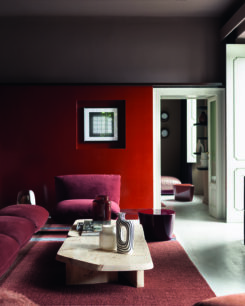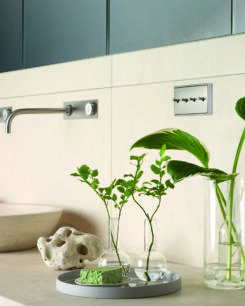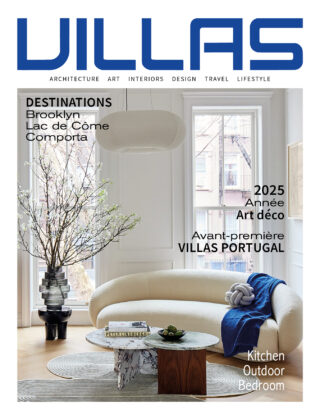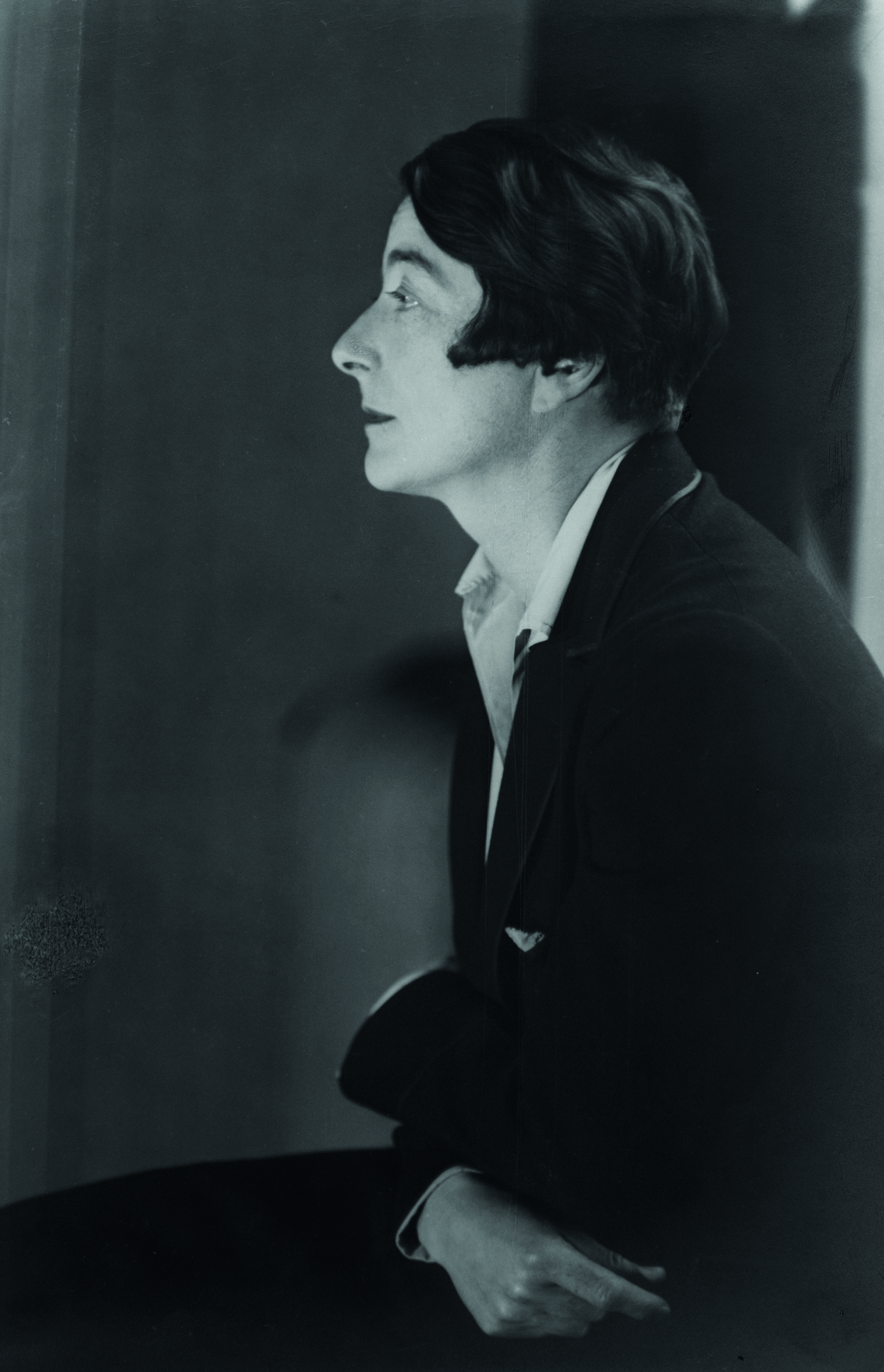
Portrait d’Eileen Gray. Photo : © National Museum of Ireland
Only some of the array of functional and innovative ideas with which Irish-born Eileen Gray (1878-1976) injected the world of interior design.
A bold simplicity
From 1925, Eileen Gray turned her sights to architecture, building her first villa, E-1027, in Roquebrune-Cap-Martin. Clinging to a rock near architect Le Corbusier’s Cabanon, this project became her focus until 1929. Designed for her and Jean Badovici, the Romanian architect with whom she lived and worked, the house integrated furniture into the space, taking into account both private and collective uses.
De Stijl Rug, 1920-1935, designed by Eileen Gray. Manufacturer ClassiCon authorised by The World Licence Holder Aram Designs Ltd (classicon.com).
As part of her next project, the Maison Badovici, in Vézelay, Burgundy, which was built between 1927 and 1937, she designed furniture to perfectly blend in with the volumes. Her creations included a set of sofas, an under-stair bar and bookcases, as well as a headboard featuring a nightlight, a reading board and even a retractable bedside table. The small, light, multi-functional pieces of furniture could be moved around, fulfilling several needs according to the time of day and foreshadowing today’s nomadic furniture. In the heyday of travel, cruise ships and transatlantic liners, Eileen drew her inspiration from the world of ocean liners, from deckchair-style loungers to revisited club armchairs in the smoking room.
In the early 1930s, she channelled all her attention into building her own house, named Tempe a Pailla, in Castellar, near Menton, as well as into renovating her Paris apartment and Jean Badovici’s small studio. This allowed her to put into practice her pioneering notions of space-saving and optimal space management. In her last project, Lou Pérou, a house near Saint-Tropez, she compensated for the reduced dimensions of the living area by developing outdoor living spaces. All these properties were the subject of playful and ingenious experiments and resulted in pieces of furniture that were totally unprecedented at the beginning of the 20th century.
Roquebrune Chair, 1926, designed by Eileen Gray. Manufacturer ClassiCon authorised by The World Licence Holder Aram Designs Ltd (classicon.com).
Rivoli Table, 1928, designed by Eileen Gray. Manufacturer ClassiCon authorised by The World Licence Holder Aram Designs Ltd (classicon.com). Photo : © Elias Hassos
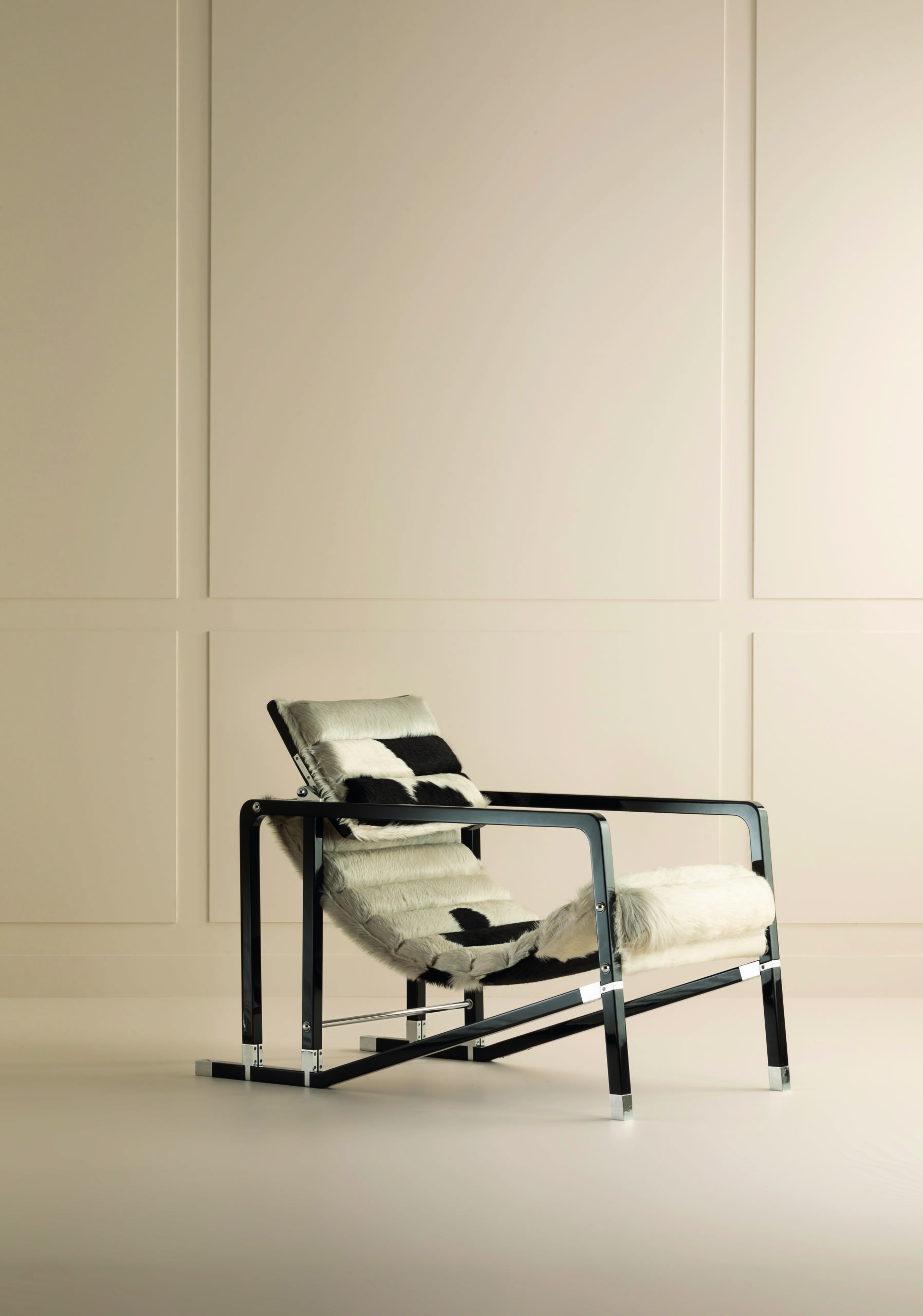
Fauteuil Transat, 1927, design Eileen Gray, édité chez Ecart international (ecart.paris).
Adjustable Table E 1027, 1927 ; Bibendum Chair, 1926 : Tube Lignt Floor Lamp, 1927, designed by Eileen Gray. Manufacturer ClassiCon authorised by The World Licence Holder Aram Designs Ltd (classicon.com). Photo : © Elias Hassos
“A house is not a machine to live in. It is the shell of man, his extension, his release, his spiritual emanation,” declared Eileen Gray, in direct opposition to Le Corbusier’s dominant vision, which revolved around a concept of standard furniture. Le Corbusier painted multicoloured frescoes on the pristine blank walls of Villa E.1027 when Eileen Gray was no longer living there, distorting the elegance of the place she had designed as a graphic showcase. Composed of straight lines and controlled curves, tubular metal structures resonating with the spirit of the Bauhaus, the furniture designed by Eileen Gray tended towards the use of sensual, tactile materials and contrasting yet subtle hues.
Her creations, a testament to the refinement and timelessness of her signature, that of a grande dame of Art Deco, are still manufactured by Ecart International and ClassiCon.
